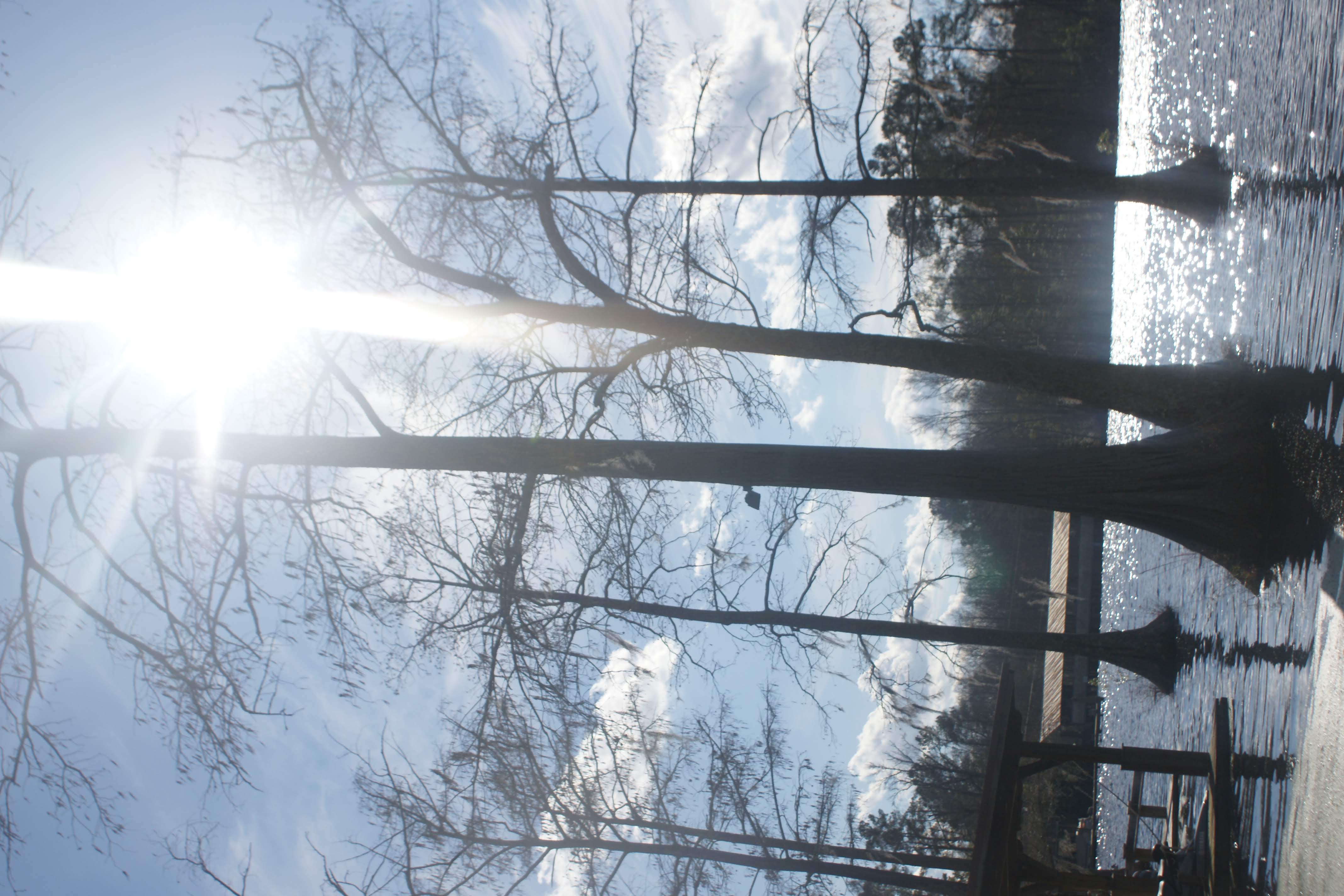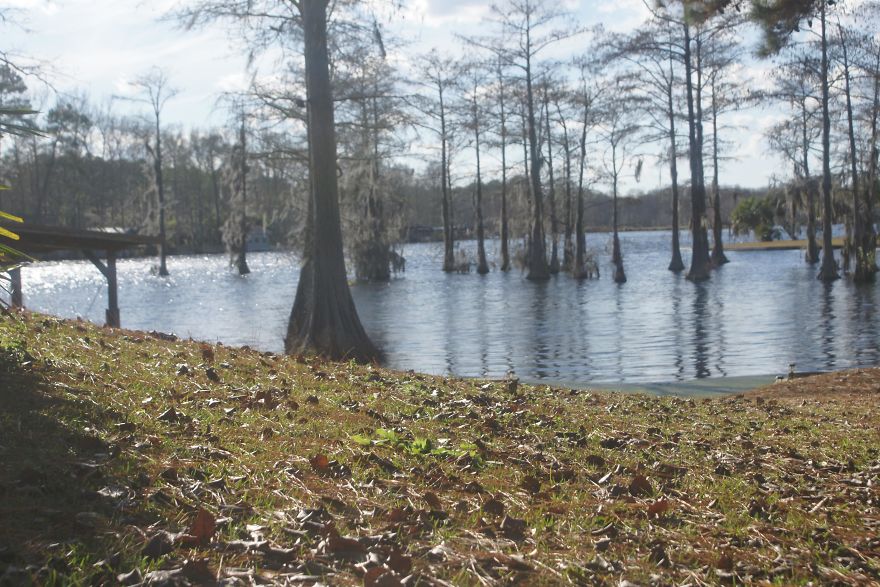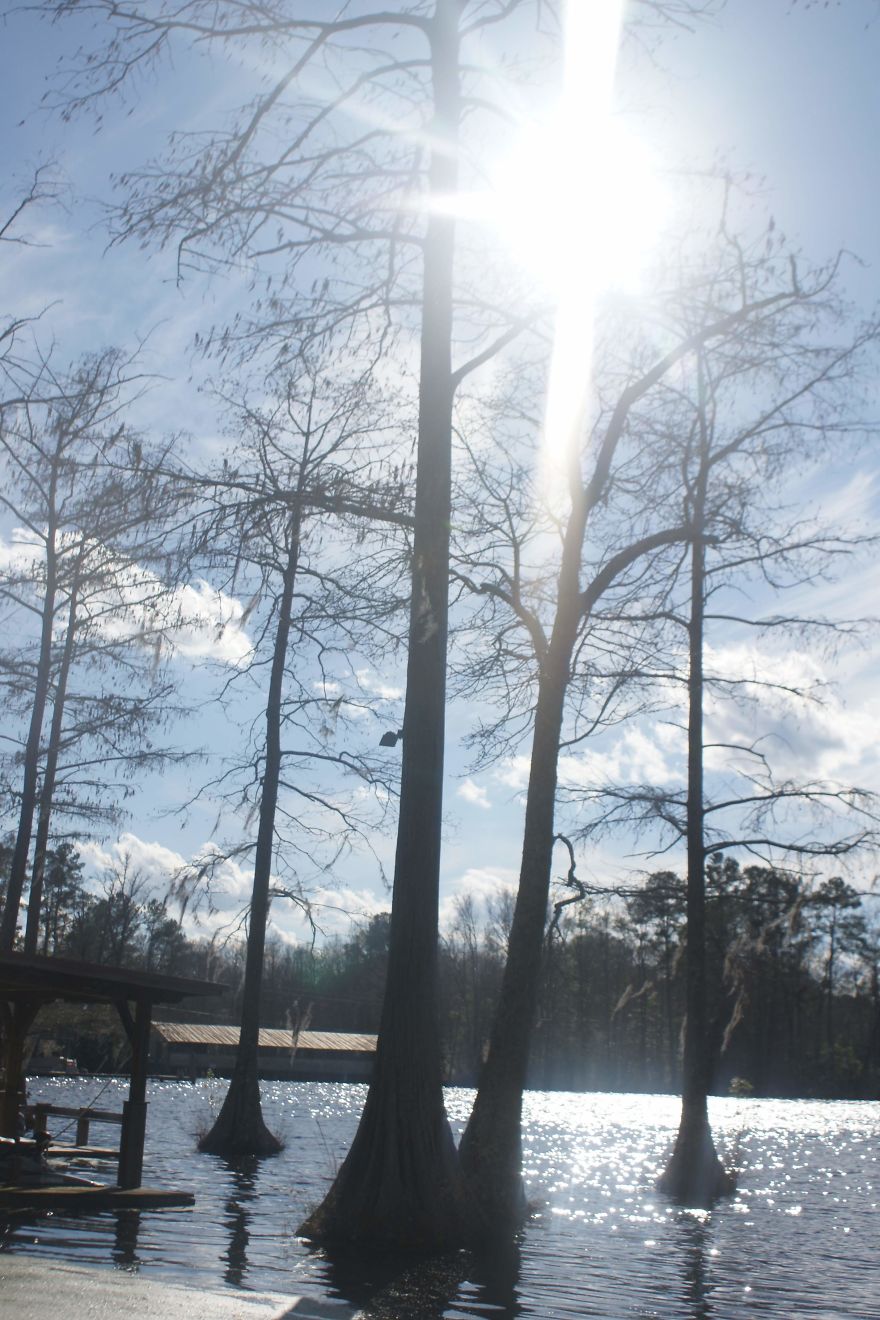
Catching The Sun Peeking Through The Staunch Cypress Trees On A Georgia Lake…
A Few Fun Facts about Cypress Trees:
*The “bald cypress” tree, as it’s known or “swamp cypress”– can survive for centuries.
*Cypress is derived from the Greek “kyparissos”, whose meaning is uncertain. When used as a name however it denotes the characteristics of the cypress tree which is long lived, very adaptable and grows in many climates. It also produces very good wood.
*There are nearly two-dozen types of Cypress trees in the world, though the heartiest versions grow in North America
*Growing slowly, the bald cypress will get taller and taller –reaching heights of up to 150 feet! The trees usually live for 600 years, though some specimens are said to have survived for more than 1,500 years!
*These slow-growing trees –most people don’t know–are usually hollow.
*They are native to swampy areas of southern North America, and grow right in the water.
*Cypress wood is both water and rot-resistant. It’s therefore very sturdy for various areas of construction.
*The wood of the bald cypress is valued for its water-resistance and is known as pecky, or peggy, with small holes caused by fungus
*A young bald cypress is symmetrical and pyramidal. As it matures, it develops a coarse wide-spreading head. Its tapering trunk is usually about 100 feet tall and 3.3 feet in diameter, 44 feet in circumference.
*The reddish brown bark weathers to an ashy gray. A tree growing in wet soil is strongly buttressed about the base, and its horizontal roots often send conical woody projections called “knees” above the waterline.
*The presumed function of the knees is still poorly understood; they may help oxygenate the roots or provide support in the soft muddy soil. The flat needlelike leaves are arranged alternately in two ranks along small twigs.
*The trees are deciduous (sheds leaves annually), although the leaves can persist year-round in warmer climates.
*The seed cones are green and globular and are typically no larger than 1.4 inches in diameter.
*Bald cypress grows naturally near springs, on lake banks, in swamps or in bodies of water that flow at a slow to moderate rate. In cultivated landscapes, you can grow them in almost any soil.
*In classical antiquity, the cypress was a symbol of mourning and in the modern era it remains the principal cemetery tree in both the Muslim world and Europe. In the classical tradition, the cypress was associated with death and the underworld because it failed to regenerate when cut back too severely.
*In the Christian tradition, the Cypress is a symbol of death, life and resurrection, and signifies the heavens calling.
*Due to its rot-resistant wood (similar to rosewood), the Chinese Swamp Cypress is highly sought after for a variety of structural and boat-building uses, and is threatened (like so many endangered species) by poaching.
*Cypress knees were made illegal to cut in the 1960’s because they were being used so prolifically as tourist trap fodder. When the knee is cut, it kills or severely damages the cypress to which it belonged.
*Many cypress wetlands are now protected and this varies by location with the highest populations in Florida and Louisiana.
Cypress Lake, Georgia
Cypress Lake, Georgia
Cypress Lake, Georgia
2Kviews
Share on Facebook






0
0